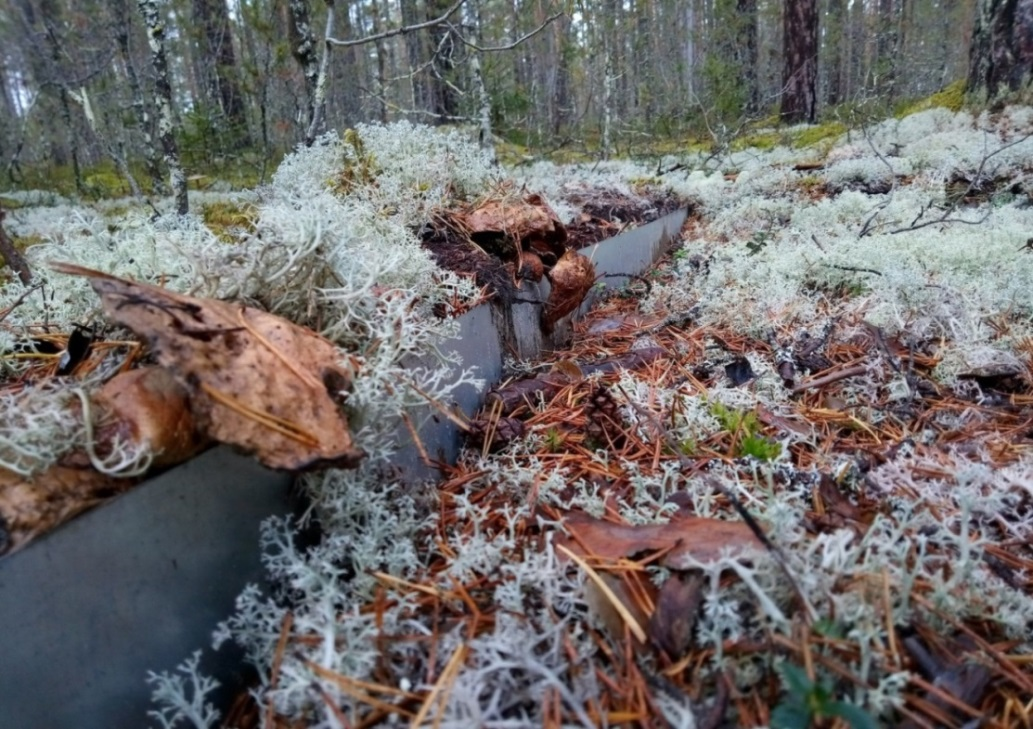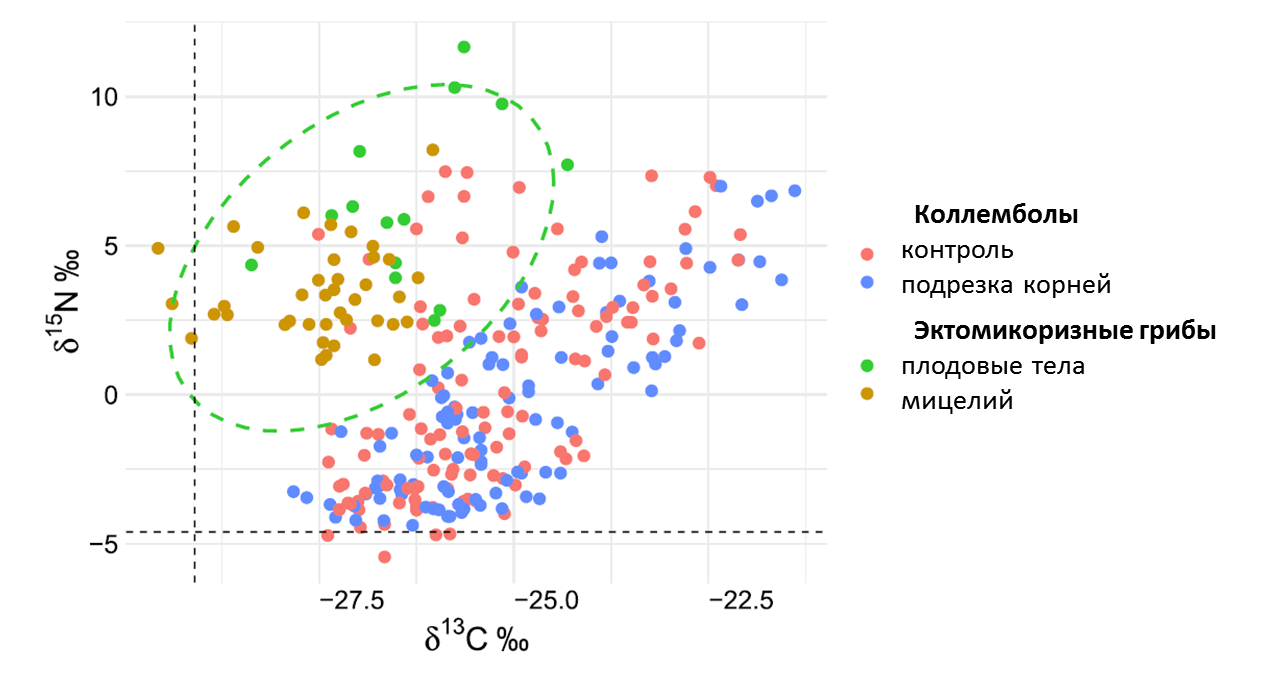
Researchers from IEE RAS, Zuev A.G. and Doctor of Biological Sciences Corresponding member Tiunov A.V., together with colleagues from the Moscow Pedagogical State University and the Forest Institute of the Karelian Research Center of the Russian Academy of Sciences, studied the significance of the flow of matter and energy entering soil food webs through the mycelium of mycorrhizal fungi in coniferous forests for soil springtails. A four-year field experiment was conducted in 70-year-old and 180-year-old pine forests on the territory of the Kivach Nature Reserve (Republic of Karelia). It included pruning tree roots, isolating experimental areas with steel sheets to a depth of 0.6 m, and further monitoring changes in the abundance and isotopic composition of soil springtails at the species level.

The springtail community was represented by 25 species, of which 22 were common to young and overripe pine forests; the dominant species in the communities of both forests also coincided. Tree root pruning did not lead to a statistically significant change in the total number of springtails, but the abundance of the species Friesea mirabilis, Mesaphorura yosiii, and Willemia anophthalma decreased with root pruning in a 70-year-old pine forest. The biomass of the mycelium of mycorrhizal fungi 1 year after root pruning on the experimental plots was approximately three times lower compared to the control, and did not differ between forests of different ages.
The isotopic composition of nitrogen and carbon, corresponding to the isotopic composition of the putative consumers of the mycelium of ectomycorrhizal fungi (inside the green ellipse in Fig. 2), was found almost exclusively in springtail samples from control plots, represented by 5 species. In general, the results of the study indicate the limited importance of the mycelium of mycorrhizal fungi in the nutrition of soil springtails, but confirm the importance of this resource for individual species.
The work was published in the European Journal of Soil Biology (SJR Q1, IF = 3.232)
Zuev A.G., Potapov M. B., Tiunov A.V., Saraeva A.K. (2023). Root trenching and stable isotope analysis uncover trophic links of euedaphic collembola species to mycorrhizal mycelium in pine forests. European Journal of Soil Biology, 118, 103519. https://doi.org/10.1016/j.ejsobi.2023.103519
